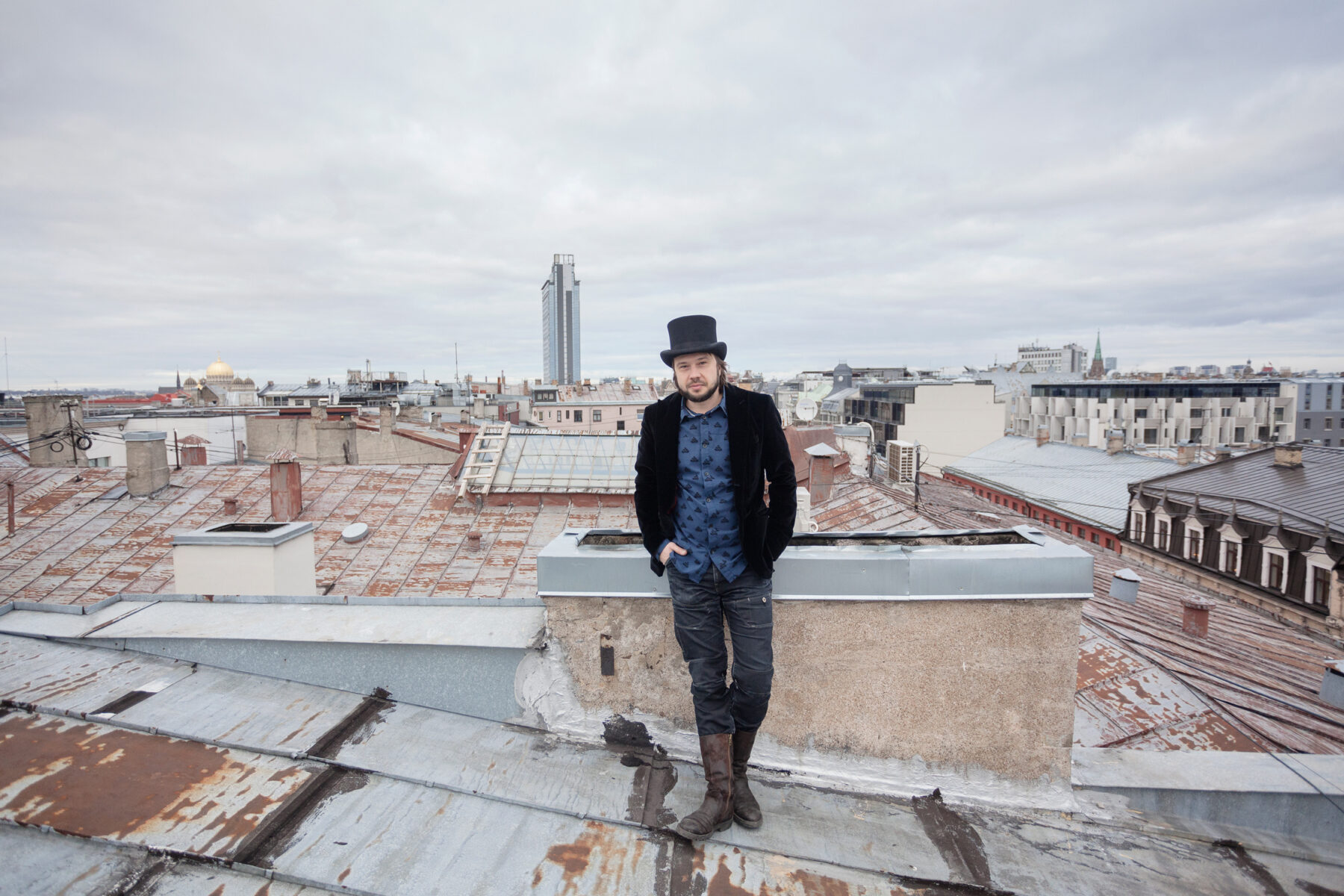We’re five storeys up above the city of Riga, adrift in a sea of rusted red rooftops. All around us are neoclassical facades, old communist eyesores, and the occasional golden church dome iridescent in the afternoon sun.
“Is it safe up here?” I call across the rooftop, whose tiles creak and groan under each footstep. “A little bit,” Andris replies, standing at the edge. His tousled brown hair waves in the wind as he looks out pensively, surveying the scene.
It’s a landscape Andris knows well, as a prominent Latvian artist and one who grew up in this city during Soviet rule. He was out on those streets when the communists fell and witnessed the bursts of creativity in the decades that followed. It’s a story that’s echoed in his art and a topic he teaches to a new generation of Latvian artists as head of the painting department at the National Academy of Art.
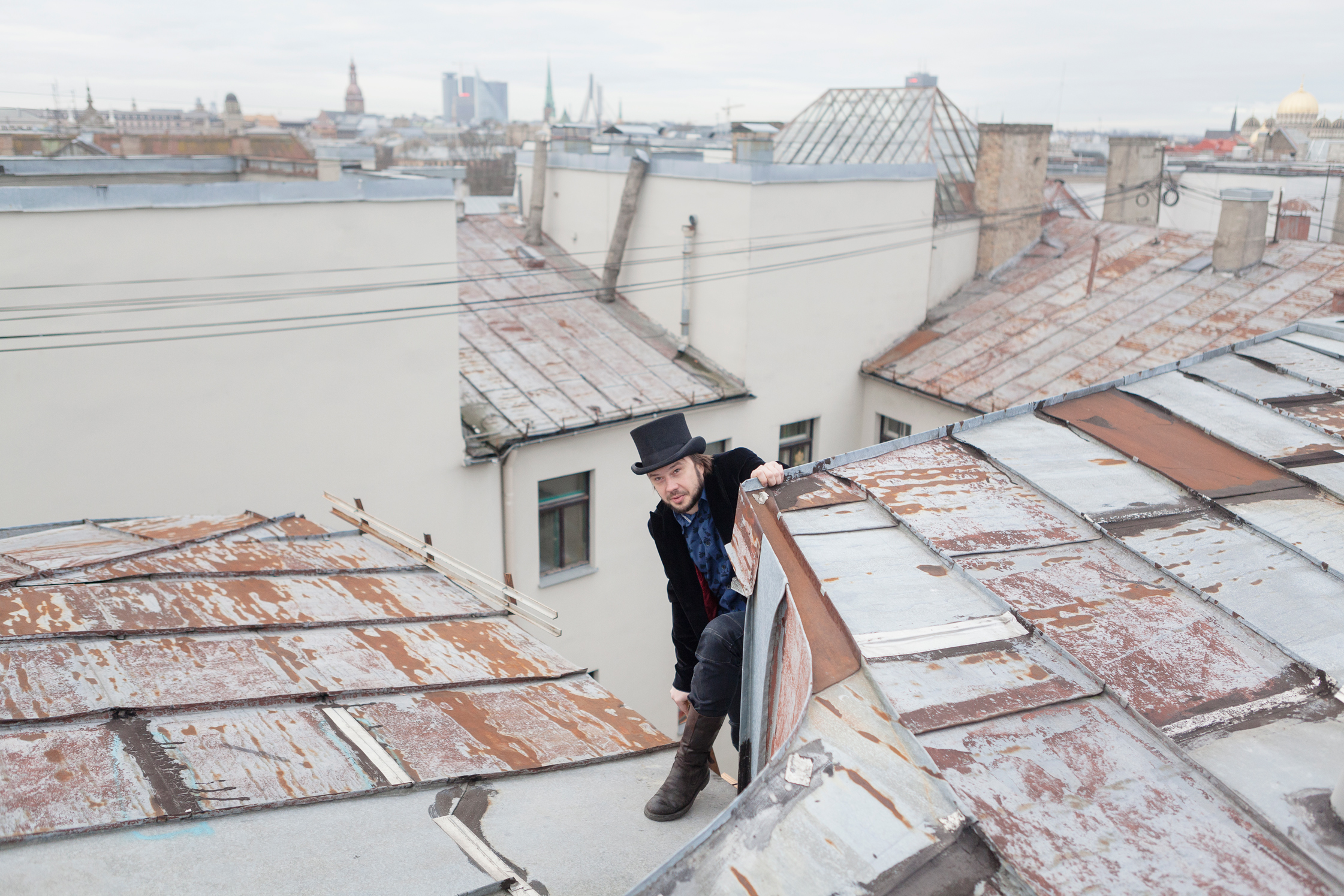
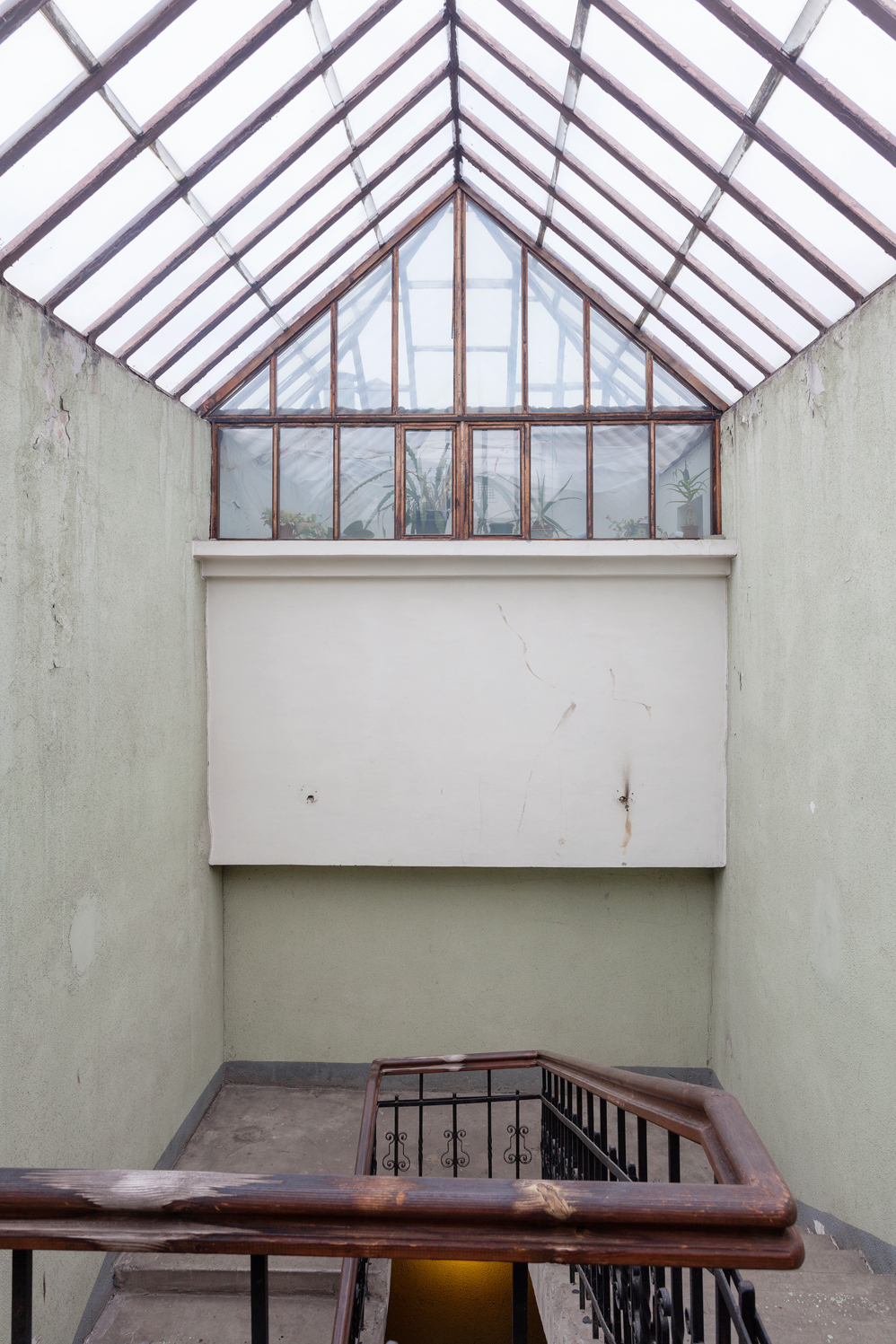
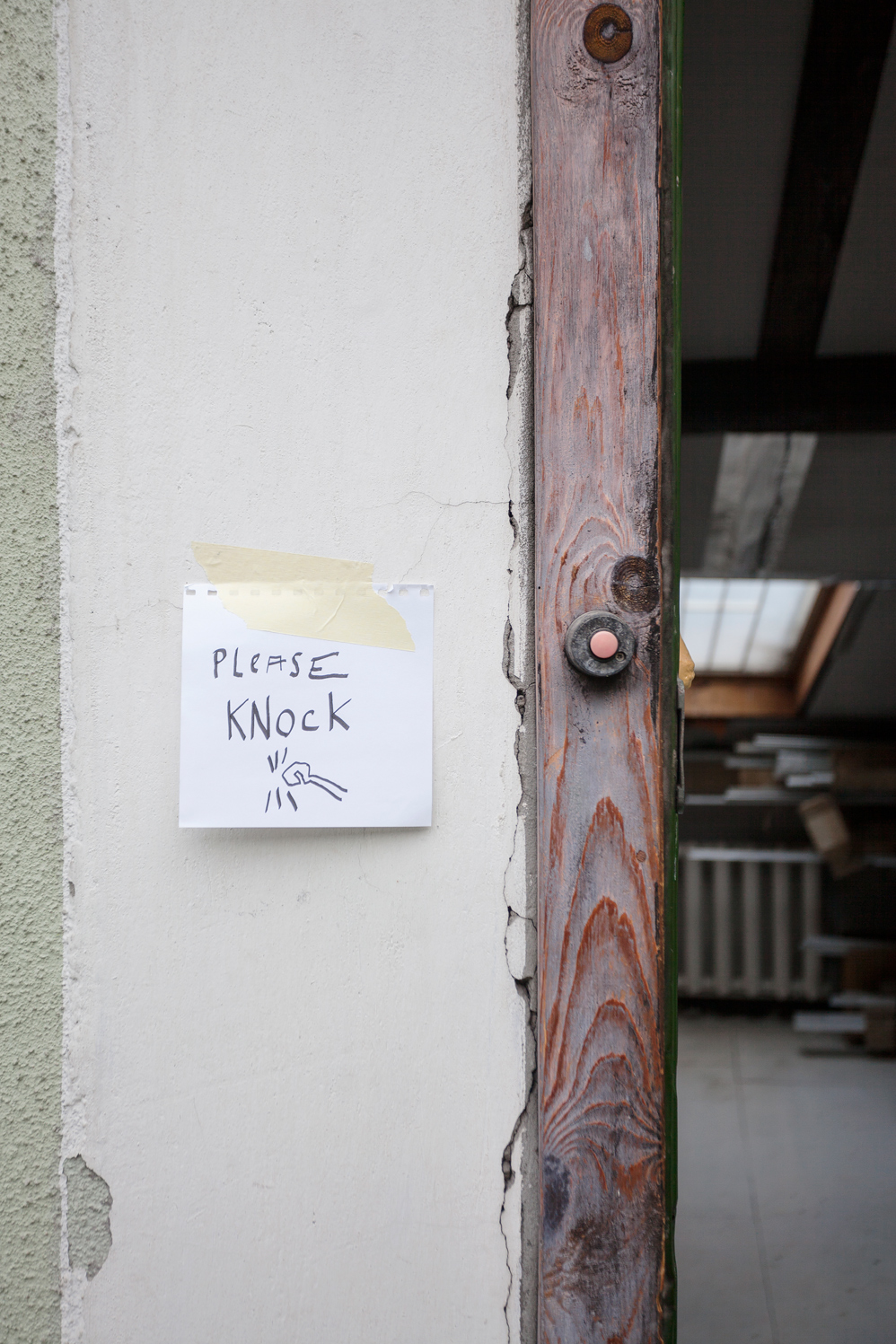
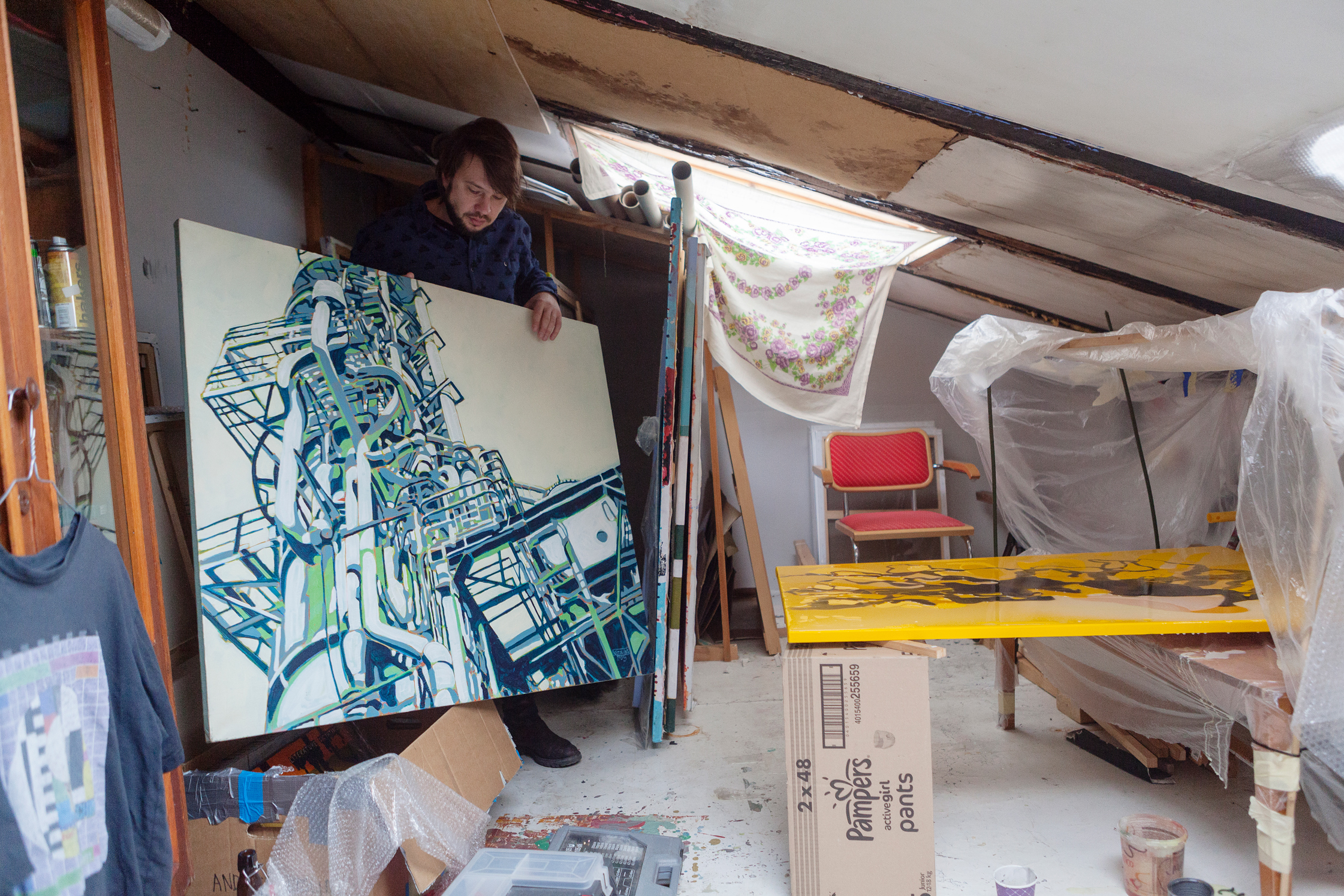
We climb down a rickety wooden ladder and move back inside through an open window. The ceiling is low and slopes inward at irregular intervals. On the walls around us are hand-scribbled notes and over-stuffed bookshelves. In the center, heaped on a bench and propped against the wall, is a paint-speckled congress of easels and art supplies. Welcome to Andris’s studio, a tangle of oddly shaped rooms and corridors, cloistered away in a Riga loft. “This is one of the last Soviet-style studios,” Andris reveals. “During Soviet times, there was a shortage of property. Artists were allowed to take ‘unusable spaces,’ like the rooftops of houses, or basements.”
Andris takes us on a tour and leads us down a hallway to an indoor greenhouse, whose torn plastic bag roof is flapping in the breeze. “Usually, artists build by themselves—not in a professional way,” Andris says, directing a puzzled glance at the roof. “After independence and the crash of the Soviets, bankers and rich people bought these places. Most studios were liquidated or turned into lofts. The owner of this building, however, was keen to preserve it.”
“In some ways, my art is nostalgic. In mechanical objects you can see processes visually; in digital objects you don’t see the process anymore: it’s so compressed in the parts.”
Andris continues the tour down a narrow passage that ends in three doors, and opens one of them onto a low trapezial compartment where dozens of paintings and photographs are stored. He rummages through stands, knocks something over, and grunts in Latvian. He emerges with a large canvas and a look of satisfaction. It’s a striking depiction of pipes and valve handles, their colors inverted, positioned above a psychedelic swirl of sunburst yellow and vermillion red.
“I came out of the mechanical century,” Andris says. “I would call our time a digital century. I studied design in the 90s when computer technology started influencing art, but I somehow escaped that. Painting, I feel, stands apart from technological progress. In a way, painting is very primitive: you can do it in the desert, jungles, wherever. You are totally independent of the products of corporations, new software…” He pauses. “In some ways, my art is nostalgic. In mechanical objects you can see processes visually; in digital objects you don’t see the process anymore, it’s so compressed in the parts.”
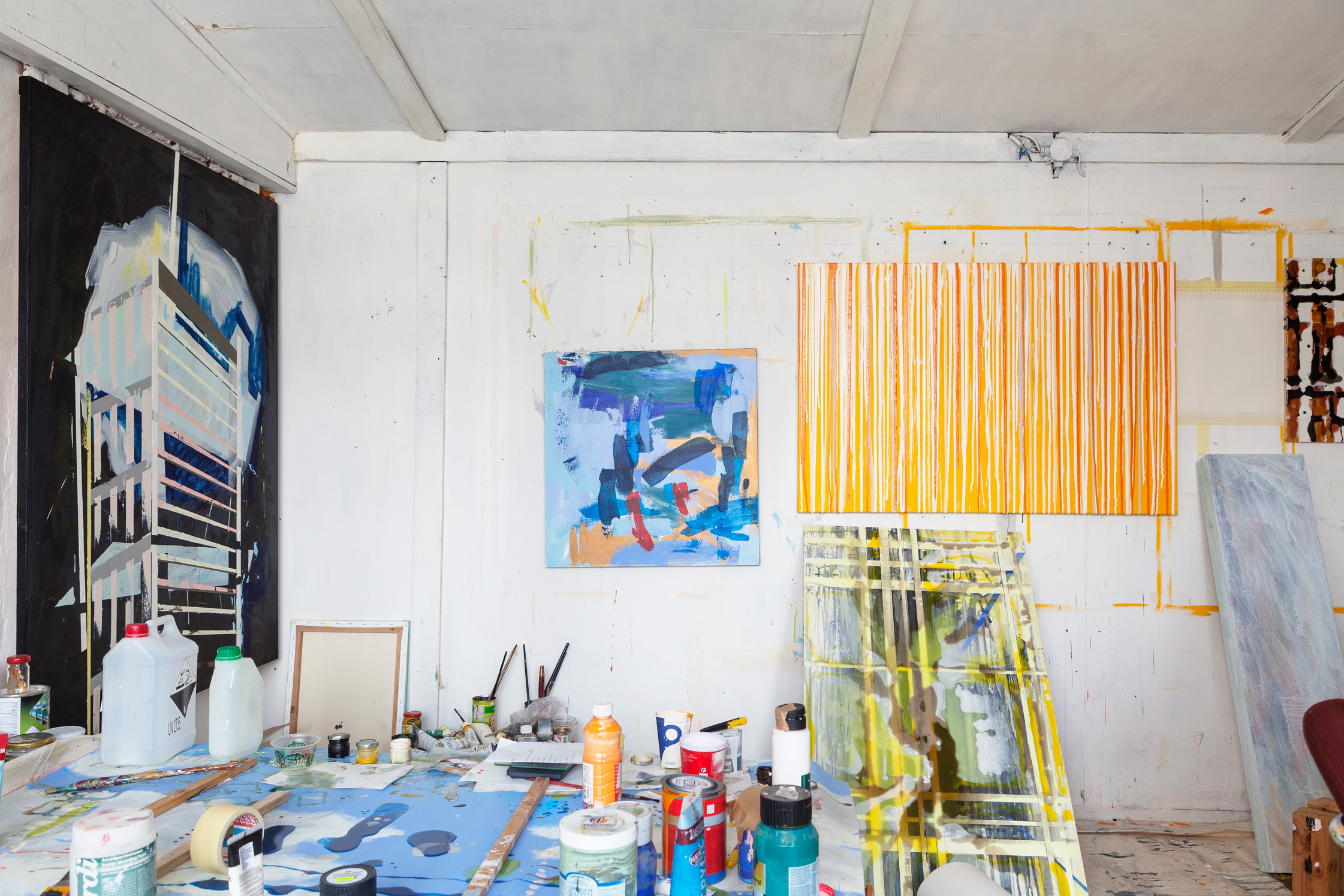
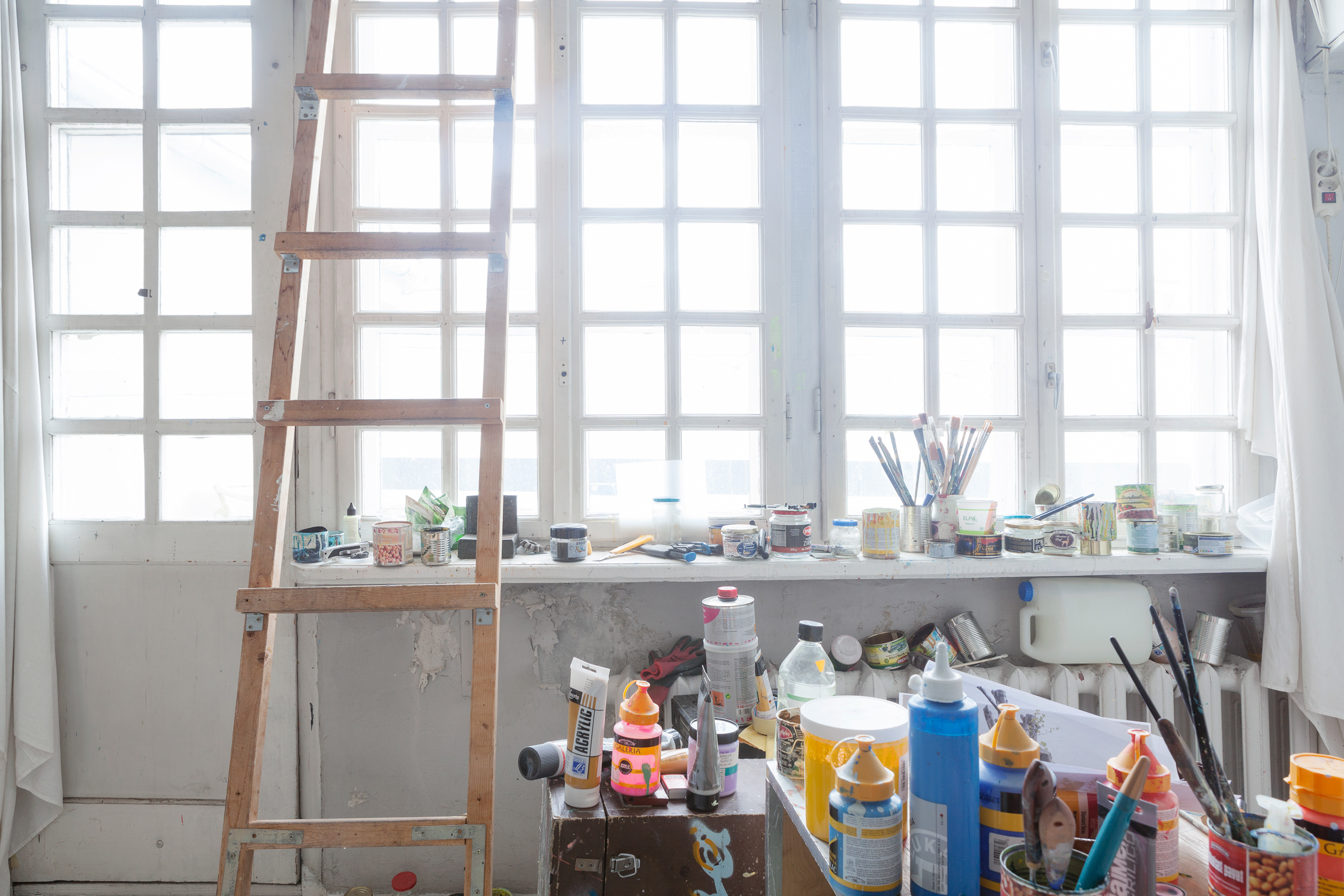
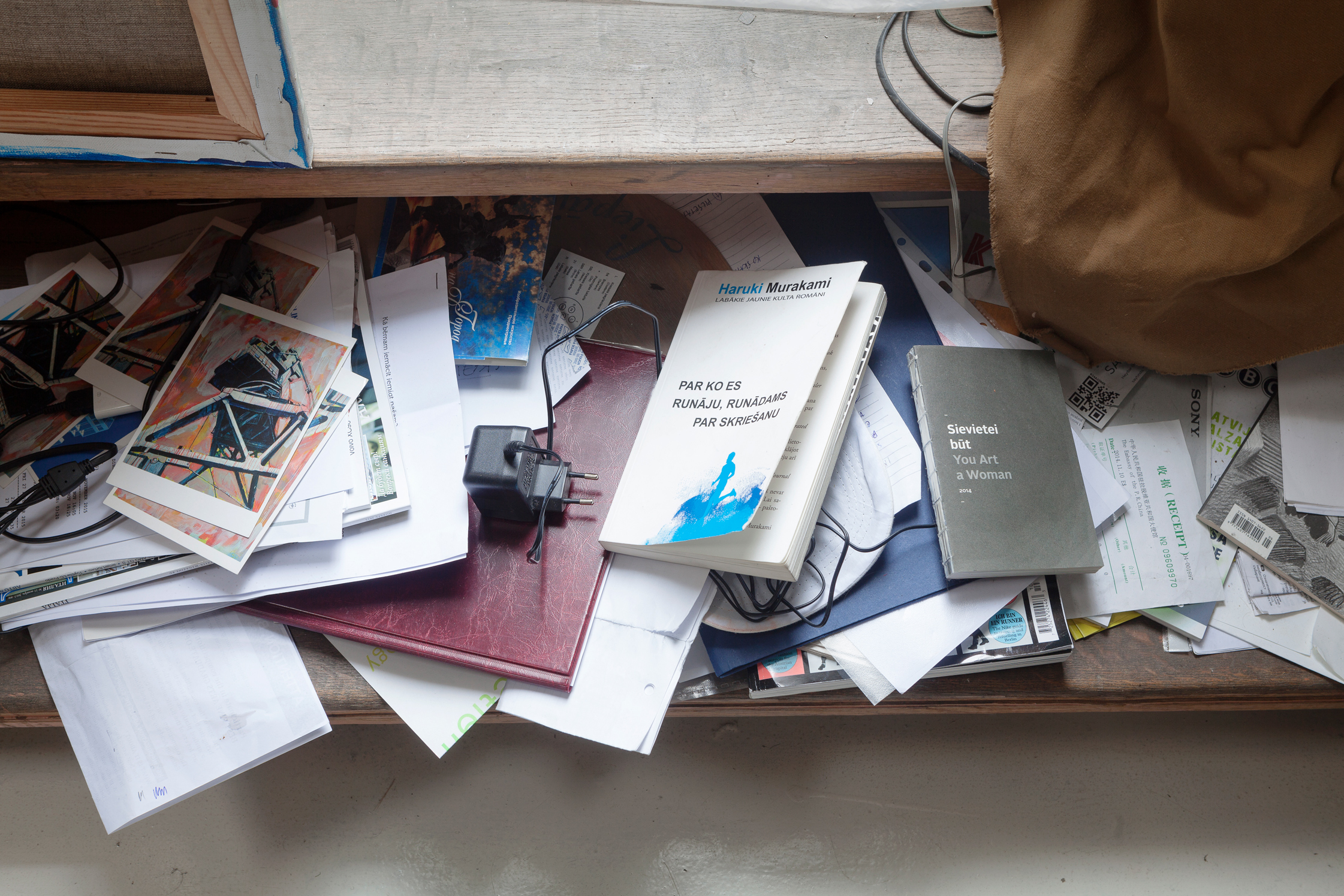
We inspect another painting, this time a forlorn factory rusting in the Latvian tundra. “It’s a feeling I have sometimes about these Soviet relics: they’re alone. Abandoned factories—there’s something sad about that,” Andris reflects. “I think it’s related to my own experience. When I grew up in the 80s, those factories were full of people. I worked in one as a child, as part of a Soviet school program, building mopeds. We did the things done in Western countries by robots—we were, in part, the Soviet robots!” Andris laughs. “After the crash, all the factories were abandoned.”
“It was a bit of a shock for me; I came out of this intelligent family and was sent straight to the factory,” Andris remembers. “But I think generally, children are happy everywhere. Even in regimes, you have a type of freedom. It’s a different freedom to Western capitalist culture, but there is no more or less freedom. There is, of course, no freedom of speech, but the children were more free. They could do what they wanted, what in Europe would be considered criminal: smoking, drinking, playing. Children would smash factory windows, et cetera. In the Soviet system, there was no trouble.” Not so with Andris’s parents. “I was a little bit of a troubled child,” he says. “I wasn’t interested in school or mathematics. My parents didn’t know what to do with me, so they sent me to art school.”
“In those days, there were officially run state galleries around Riga,” Andris explains, leaning his elbow on the frame of a canvas that’s somehow edged to his heels like an obedient dog. “My mum was interested in art, and would take me to the galleries. There was a limited way to spend your time,” he says. “These days, there are shopping centers and whatever. Back then, visiting galleries was what we did on the weekend. There were popular art days too, grand events. During the spring, there would be one a week, around the city in different places — a lot of outdoor objects. On those art days, hundreds of thousands would attend, like a Woodstock of art.”
“To be an artist in the Soviet system, you were from the higher classes, but if you tried to do something wrong, you had to know which way to do it.”
“The art then was non-political: just art,” Andris recalls. But artists still made statements. “Sometimes they embedded hidden symbols of dissent using the language of Aesop.” They would insert animals or fruit that referred to fables like The Fox and the Grapes. “Exhibitions would run for three or four days before the government discovered the message and closed the place down. But in that time, 20 or 30 thousand people had seen the piece,” he says. “They persecuted different things. There were officially accepted ways to express yourself. If you used those official ways, then your life was excellent; to be an artist in the Soviet system, you were from the higher classes. But if you tried to do something wrong, you had to know which way to do it.”
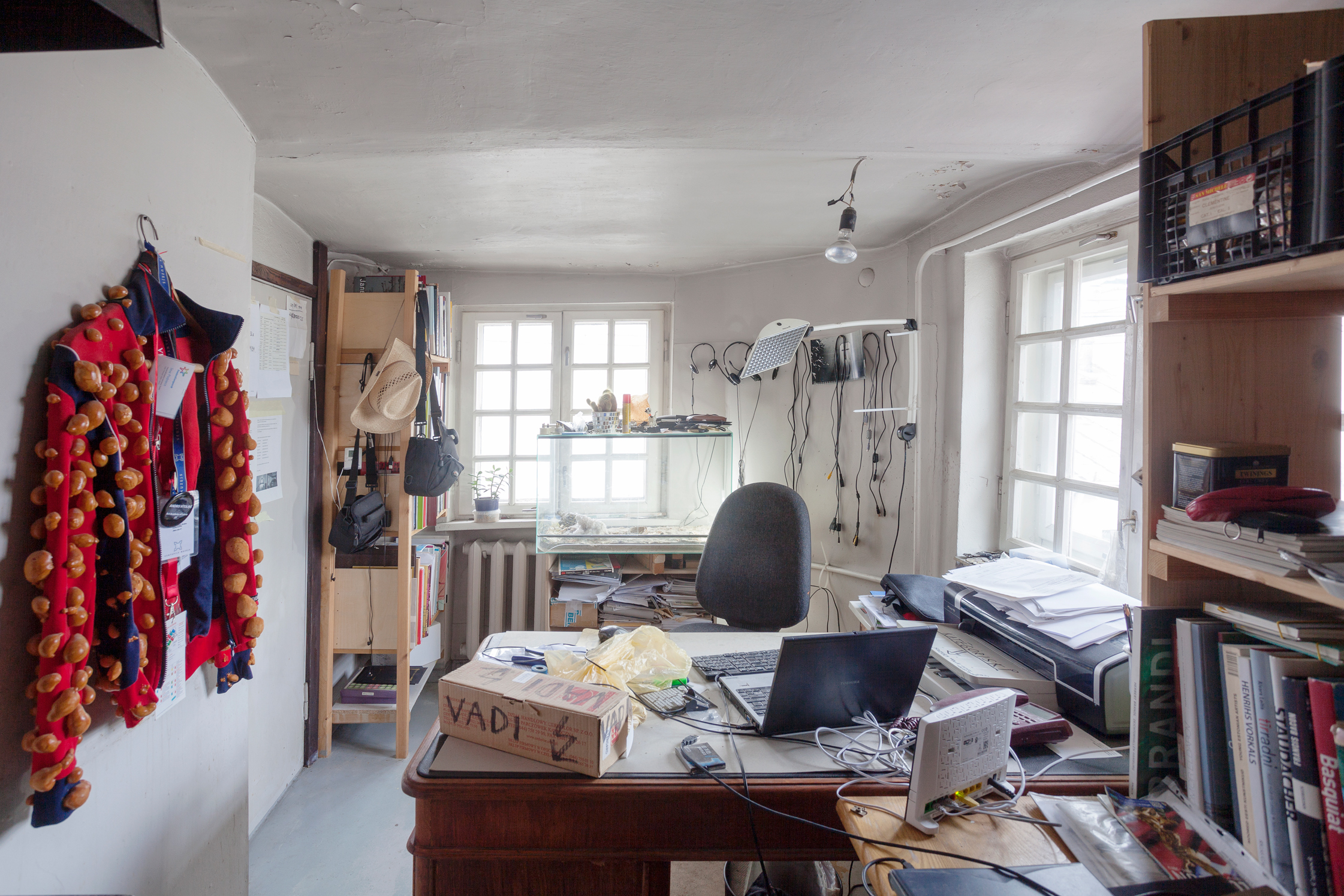
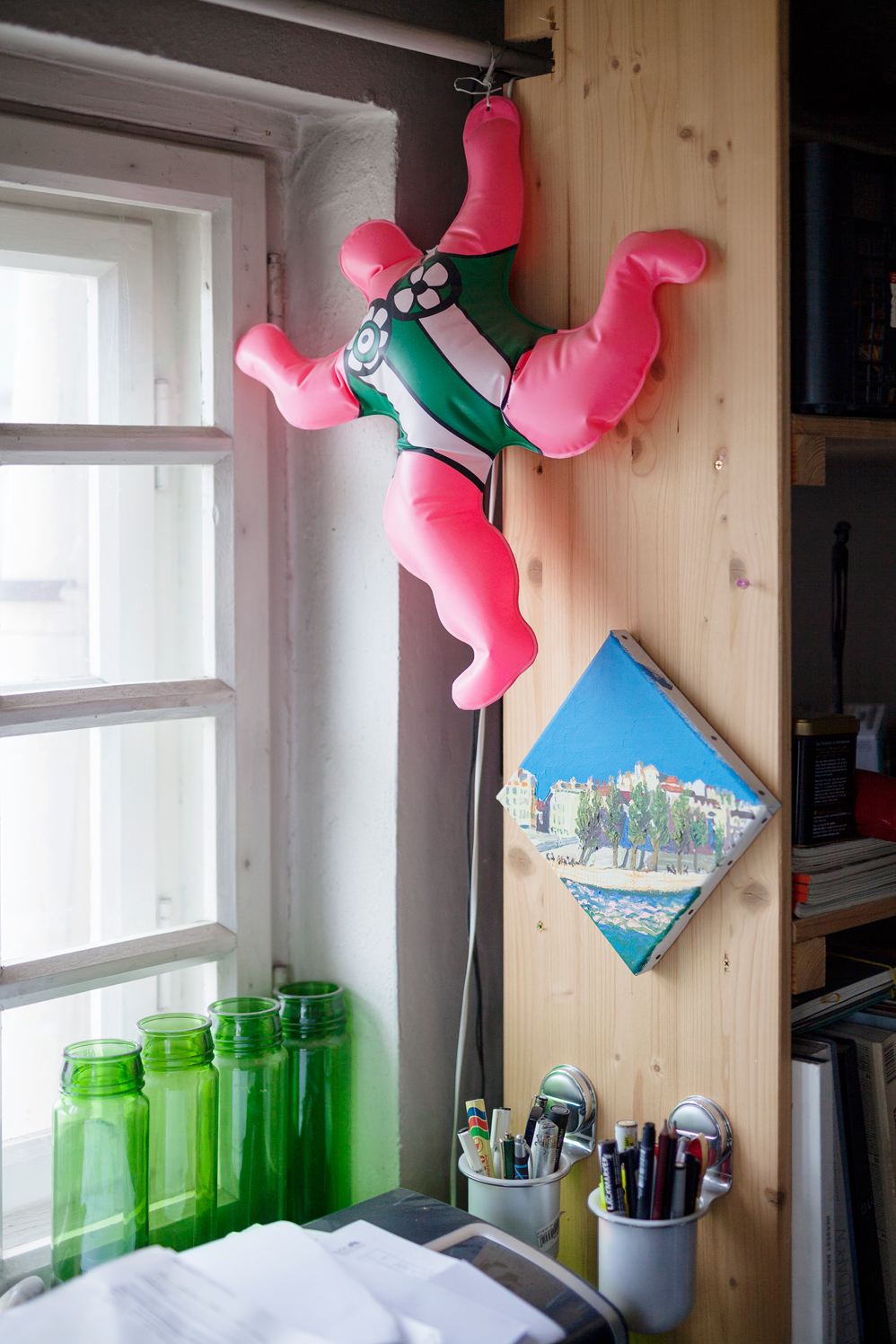
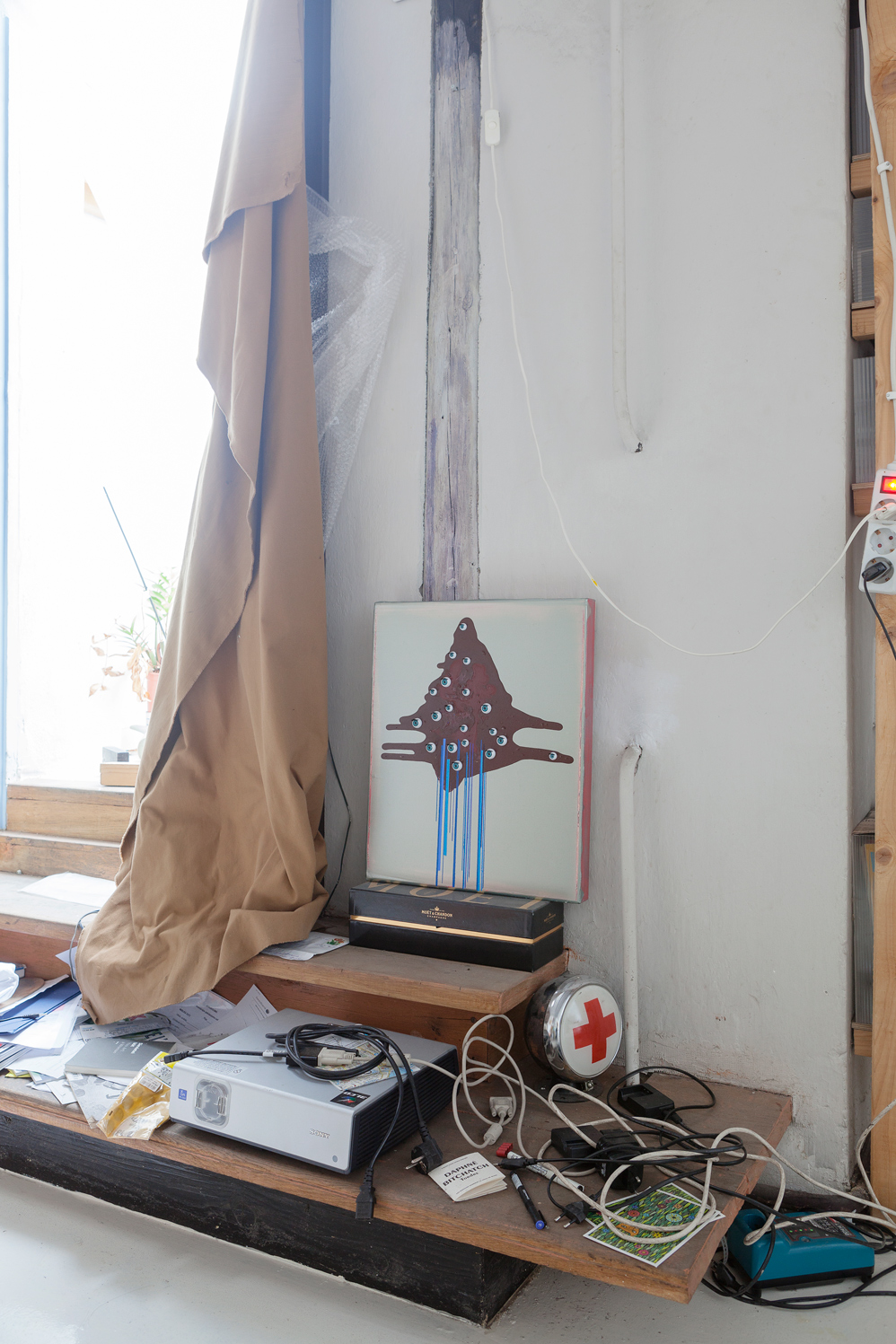
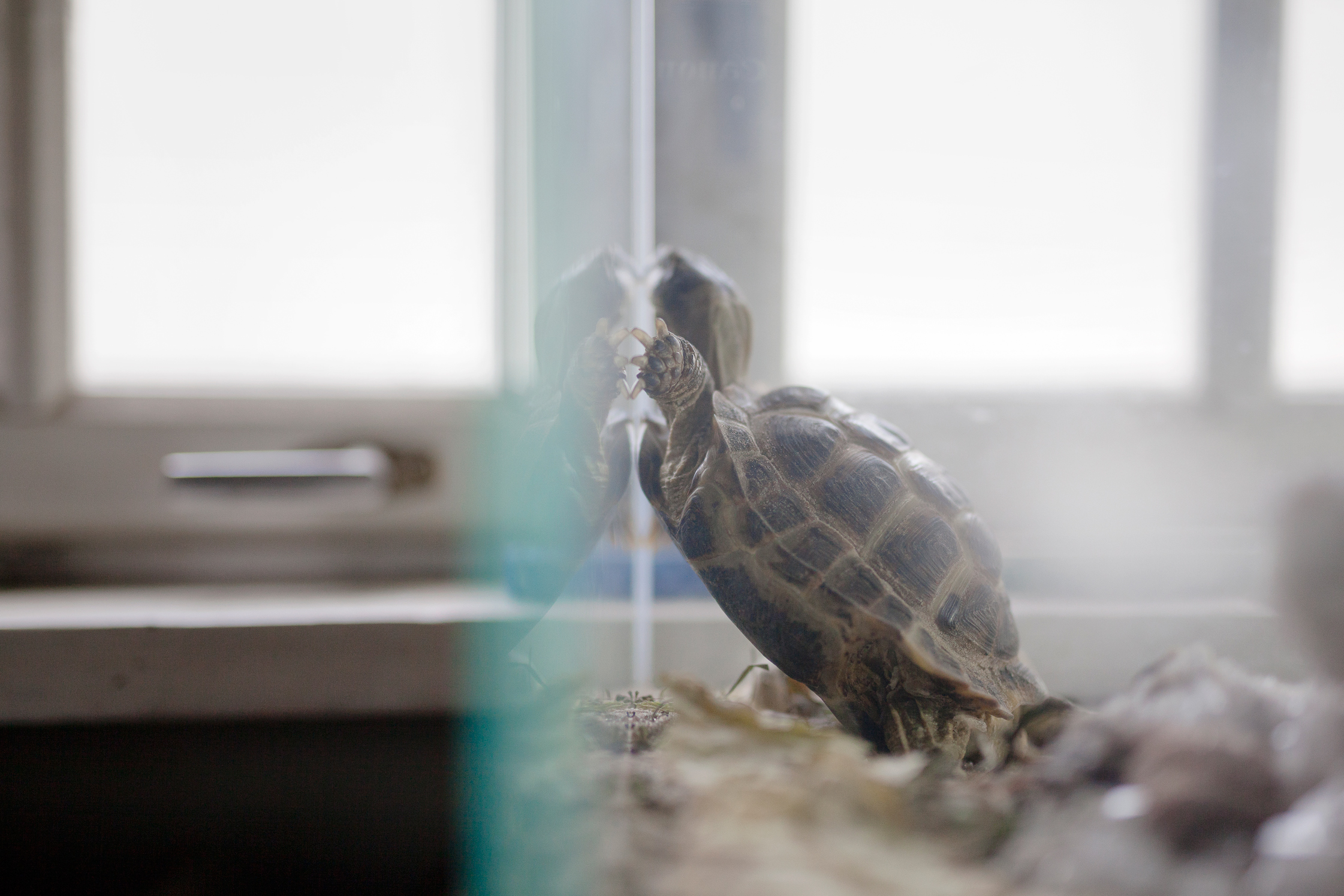
That all changed in the 80s when the Soviet Union was on the brink of economic implosion. Communist states across Europe scrambled to loosen the restraints they’d placed on free expression in a last-ditch effort to kick-start innovation. It was a momentous shift in Soviet policy and became known as perestroika or “restructuring”. Many felt the end was near, and a pervasive mood of dissidence spread from bedroom incubators to the factories and streets outside.
“When perestroika started in the 1980s, there was a flourish of new art in Riga,” Andris says. “Many huge art objects and sculptures appeared in the streets. How was it possible to build them? Sometimes they were built by the Soviet army — you just went to a military department, asked for help, and they sent a hundred soldiers in trucks!”
“We did the things done in Western countries by robots — we were, in part, the Soviet robots!”
“I remember this underground film festival where they showed pornography and other bizarre, crazy stuff,” he says. “It was supported partly by the Soviet army! They didn’t care anymore. A lot of things were done with a barter system. This is the opposite to capitalism, where everything is counted. In the West, even the army would know how much the wood, paint, and nails cost. The Soviet system was kind of… cows. You said, ‘I need four trucks filled with soldiers and wood,’ and they just gave it to you.”
“It was possible to use state materials for private ideas,” Andris explains, which isn’t the case any longer, according to him. “The post-communist changes are still affecting artists of that generation. Many artists used artist union materials—even for private businesses. The Soviet system was based on stealing materials, even though it was partly legal.” We pick out another painting and linger on it. It shows a Soviet locomotive wearing what looks like a crown of bullets. “Many regimes supported art; even tyrants like Gaddafi. That’s how they gained the loyalty of intelligent people,” Andris shrugs. “The state was one of the biggest customers. There were officially organized annual exhibitions. You sold a few paintings a year and you lived a good life. Now, it’s mostly sold privately.”
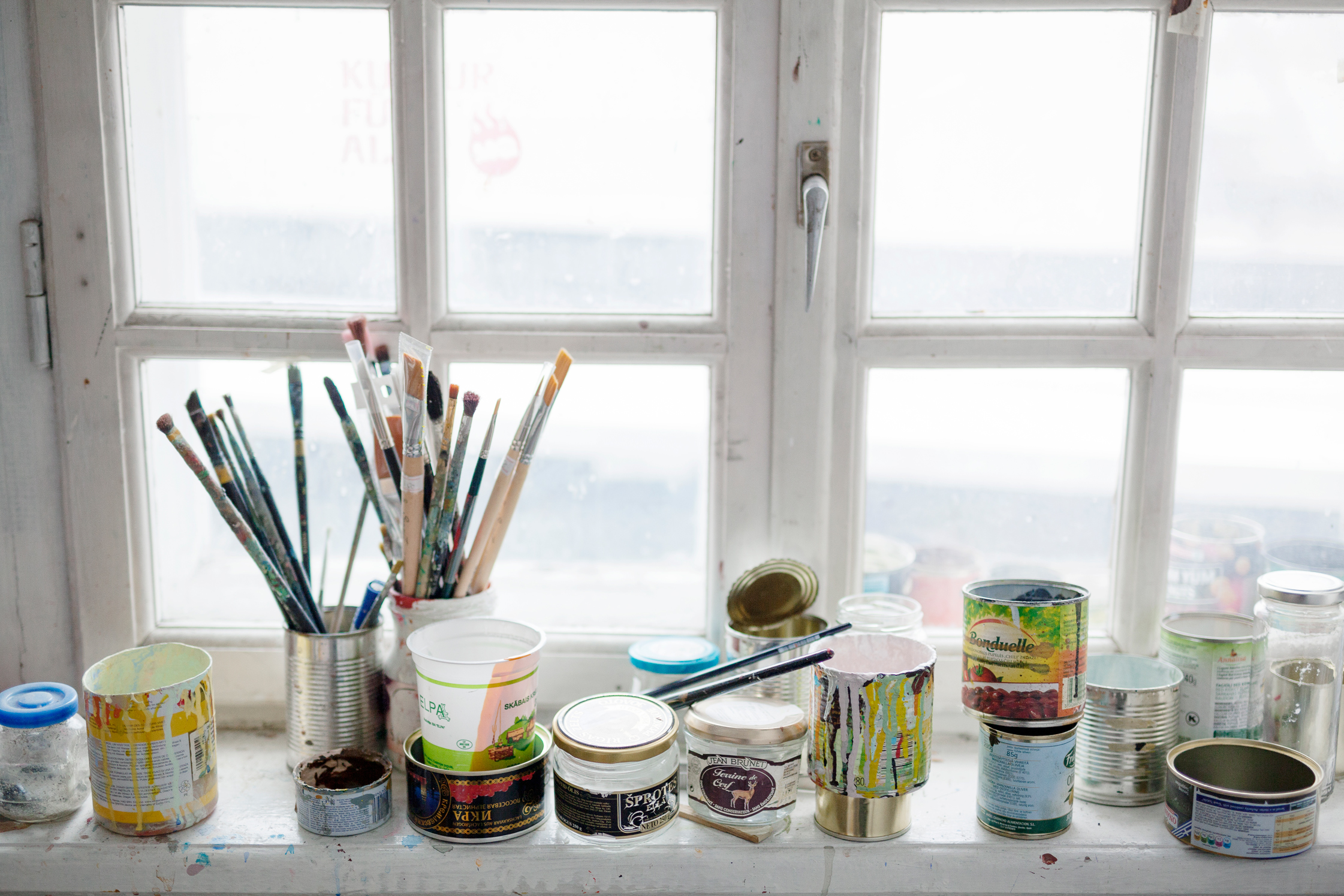
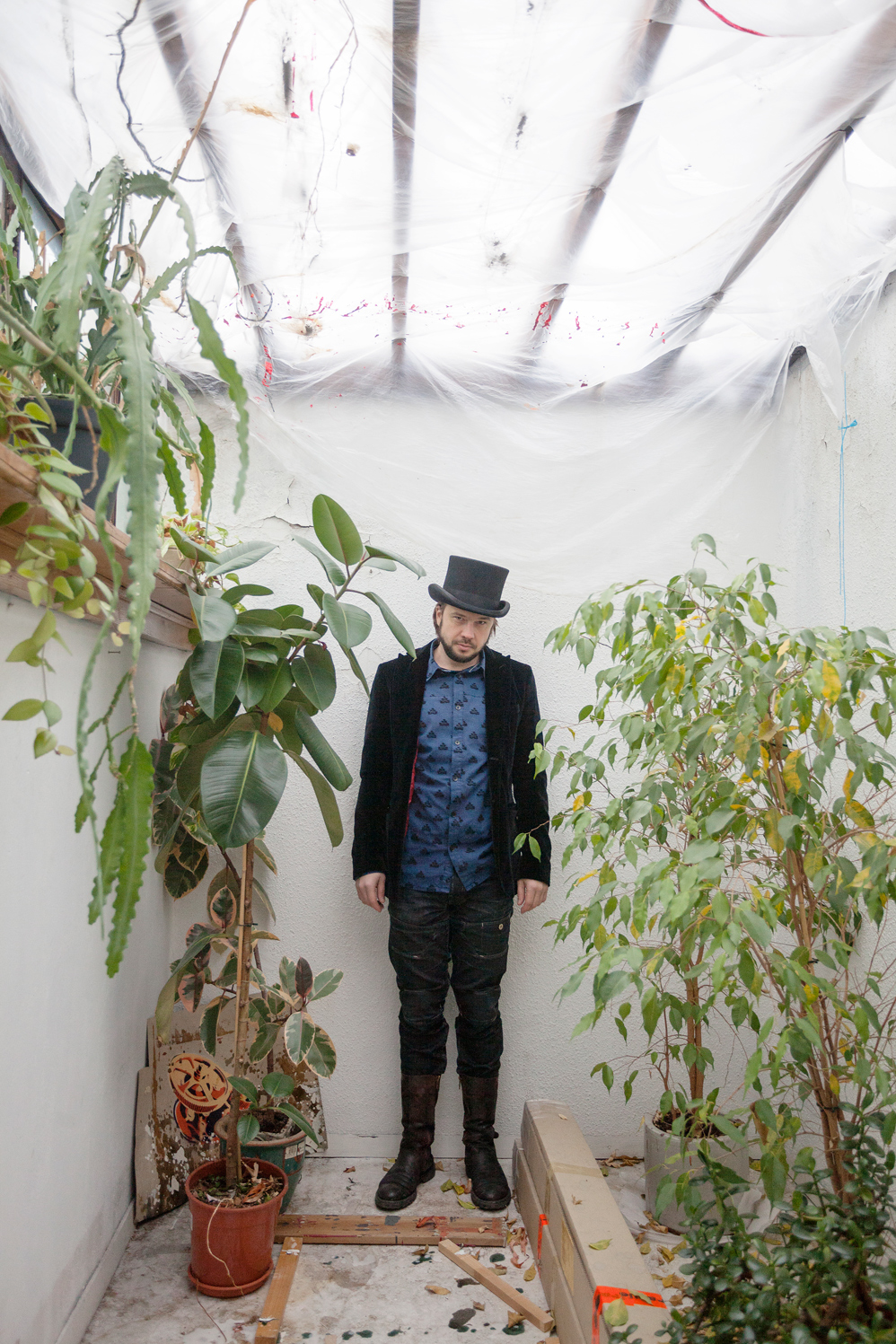
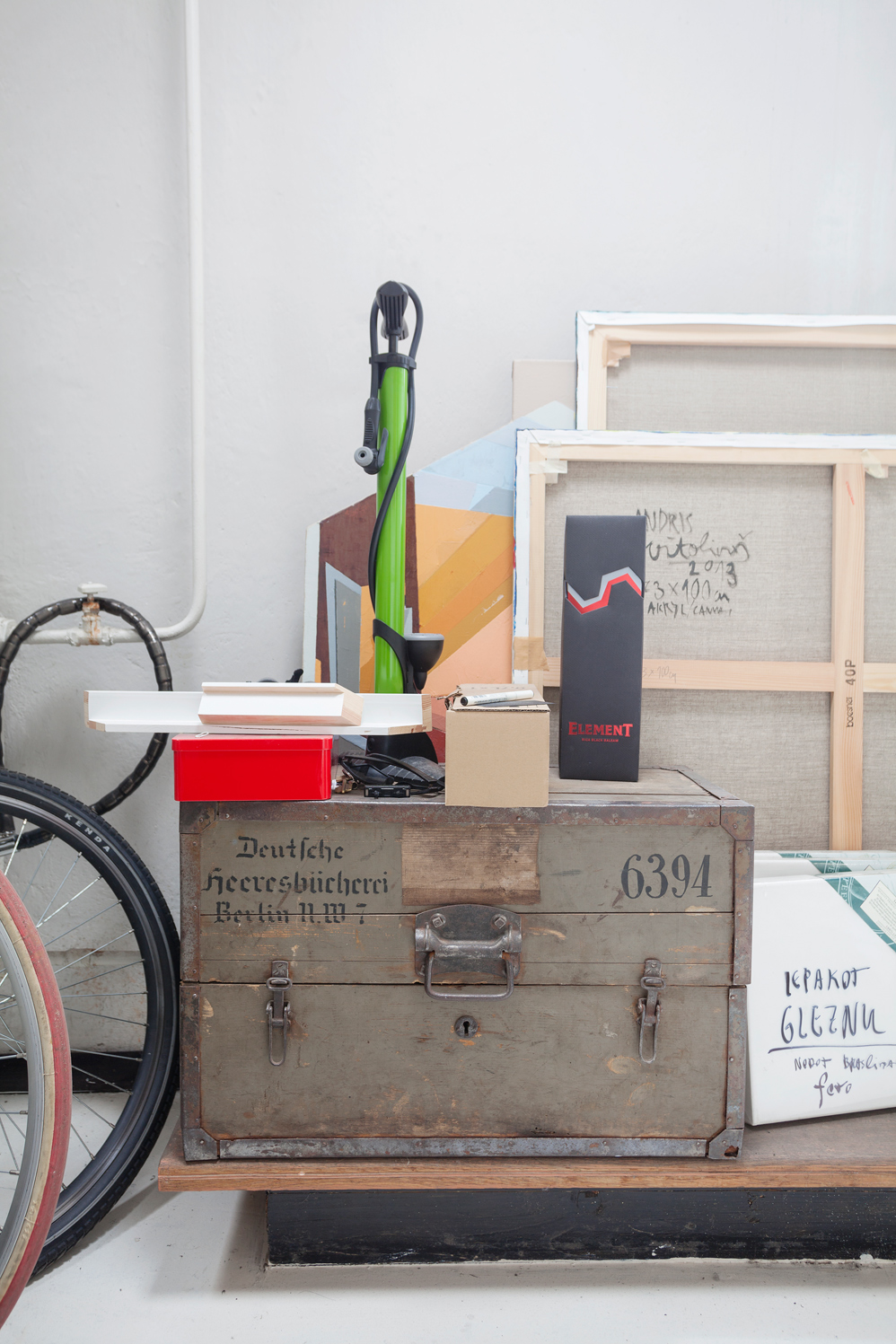
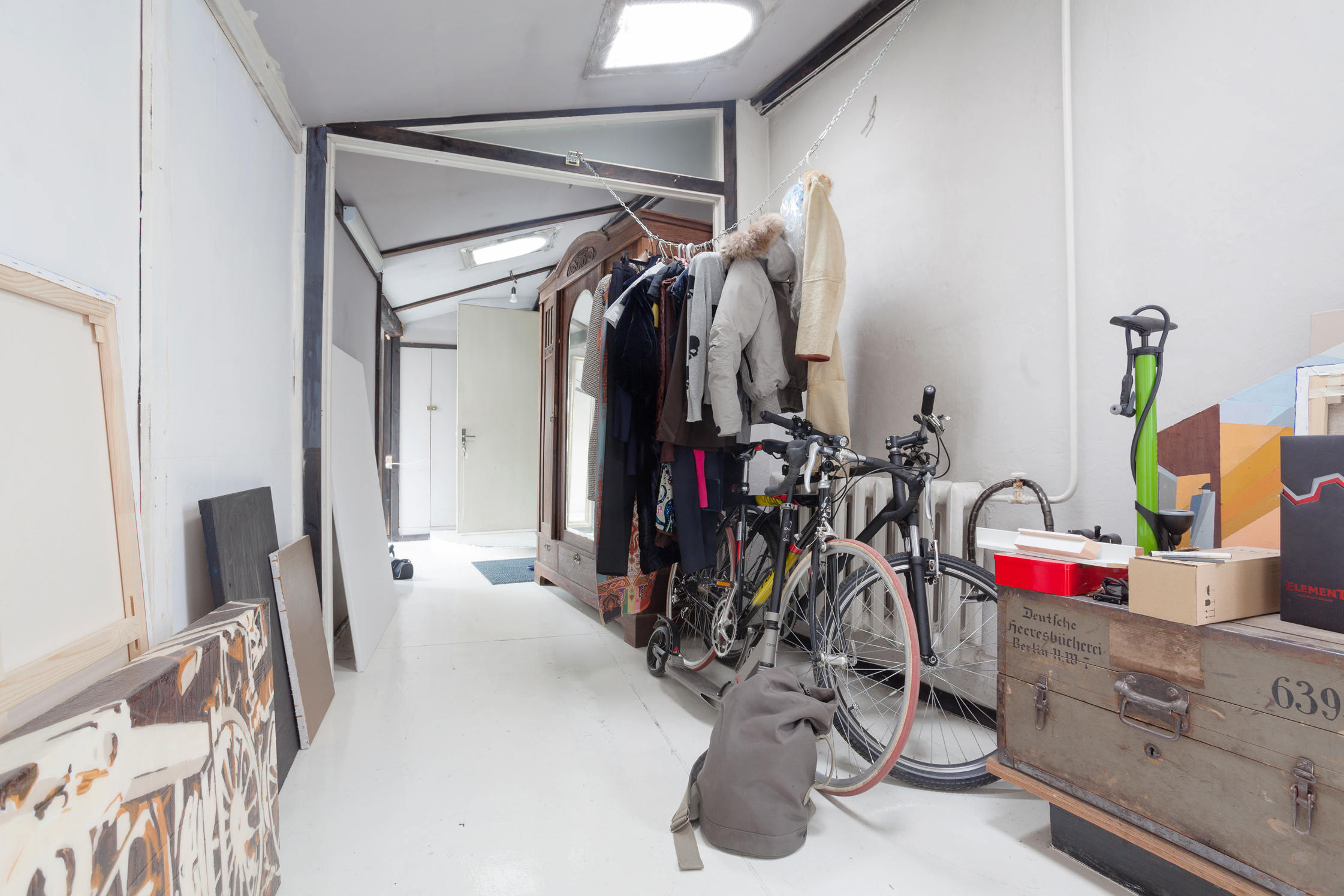
“When the Soviet system crashed, there was a feeling that anything was possible.”
We return to Andris’s main workspace and take seats amid a clutter of tables, cabinets, and popped open briefcases. Each is laden with half-empty coffee mugs, tubes of paint, and polychrome palettes. Andris sits in the center of all this wearing his trademark top hat. He’s holding his pet tortoise, Lui, aloft in his hand, whose wrinkly legs swing back and forth like a wind-up toy monkey. Andris places the tortoise down on the floor, and the unperturbed reptile makes a break for the door.
“When the Soviet system crashed, there was a feeling that anything was possible. All measurements about morality and society in a moment were gone. I remember official cinemas in the city showing porno. Regular people, like grandmas, went to watch porno on the big screen. They said, ‘Ok, it’s an erotic movie; they’re popular in the West.’ In one moment, this forbidden fruit became accessible for everybody. There were gambling bars on every corner. You could buy alcohol at anytime, anywhere. If you didn’t have money, you’d just bring your watch or something. There was a problem with children of my generation and gambling rooms… because all gambling rooms were full of children!” Andris exclaims, laughing in disbelief.
“When one system ends and a new system is still finding its feet, there is a gap: a gap of anarchy. There are no rules about what to do,” says Andris. Things are different now. “It’s like a drunk person falling from one side of the road to other. I think in the Baltics, artists have overcorrected. They try sometimes to be uber-European,” he says. “In the 90s there was this great moment of creativity, but then artists tried to connect with the global market. I think something went wrong. They tried to kill their identity and become international artists, copying western themes, even though we might not belong to those ideas.”
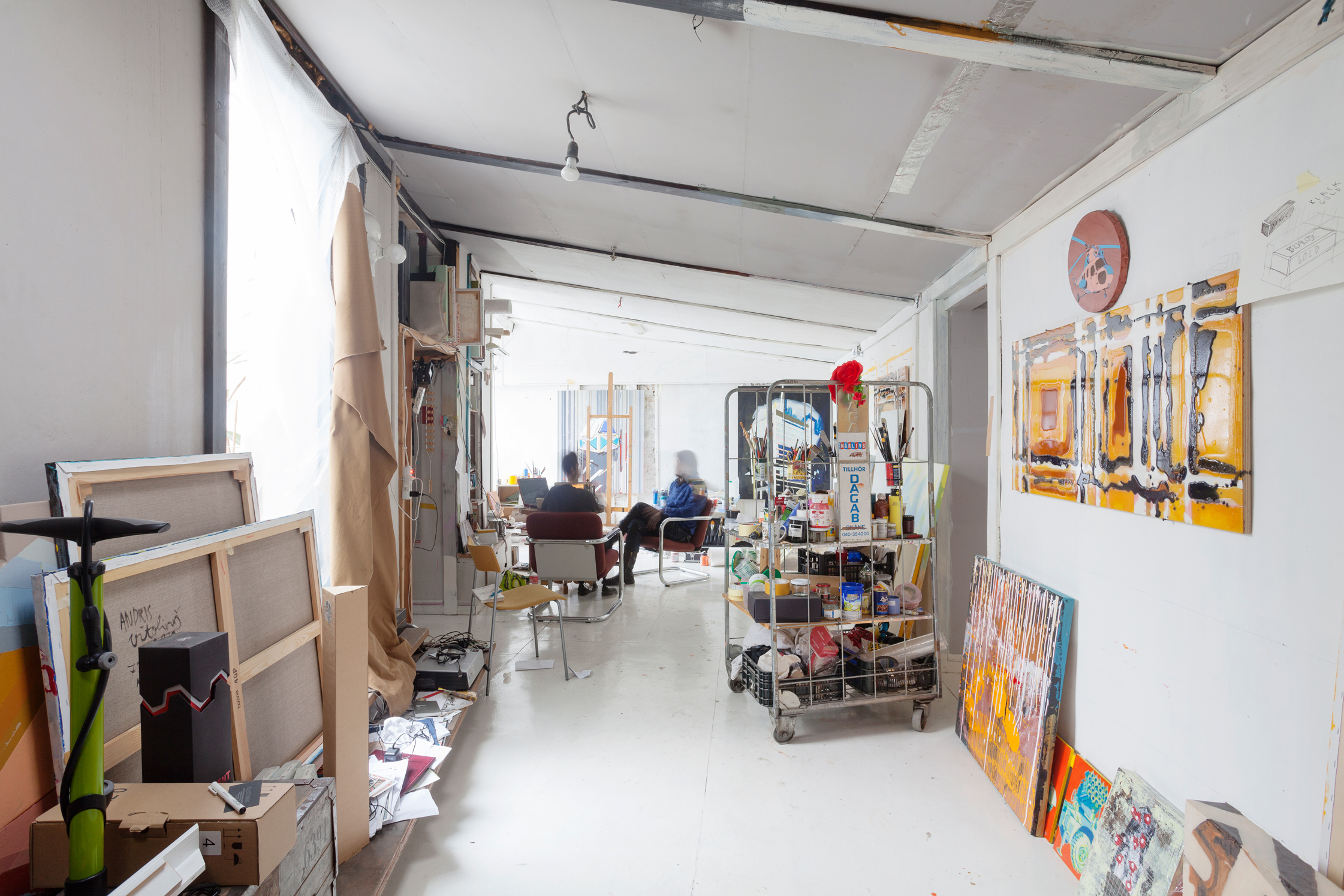
A muffled snort announces the return of the tortoise. He’s been gone for some time, and we watch in silence as he trots back in and stretches his neck. “After the fall of communism, the art scene ran with the crowd,” Andris adds. “At first, they imitated the west, like an immigrant living in America who tries to be as American as possible. But after a while, that immigrant starts to look back and rediscovers his roots. In the same way, everything related to Latvia’s past was considered old-school by Latvian artists. In the last years, artists have been coming back and realizing that their identity is important.”
This new generation of Latvian artists are often Andris’s students at the National Academy of Art. Their professor’s artistic life has been rich and varied, one that straddles two centuries — the Soviet-mechanical and the digital-democratic. It’s endowed Andris with a rare perspective on Latvian art and identity. He’s seen the drunk man stagger from one side of the road to the other, and teaches the past with sober circumspection. “In my department at University, I’ve made some changes that preserve the Soviet traditions I deem important, but at the same time try to make something new,” Andris concludes. “For universities, it’s sometimes difficult to adapt. But if you’re talking only about the past, you don’t have a future.”
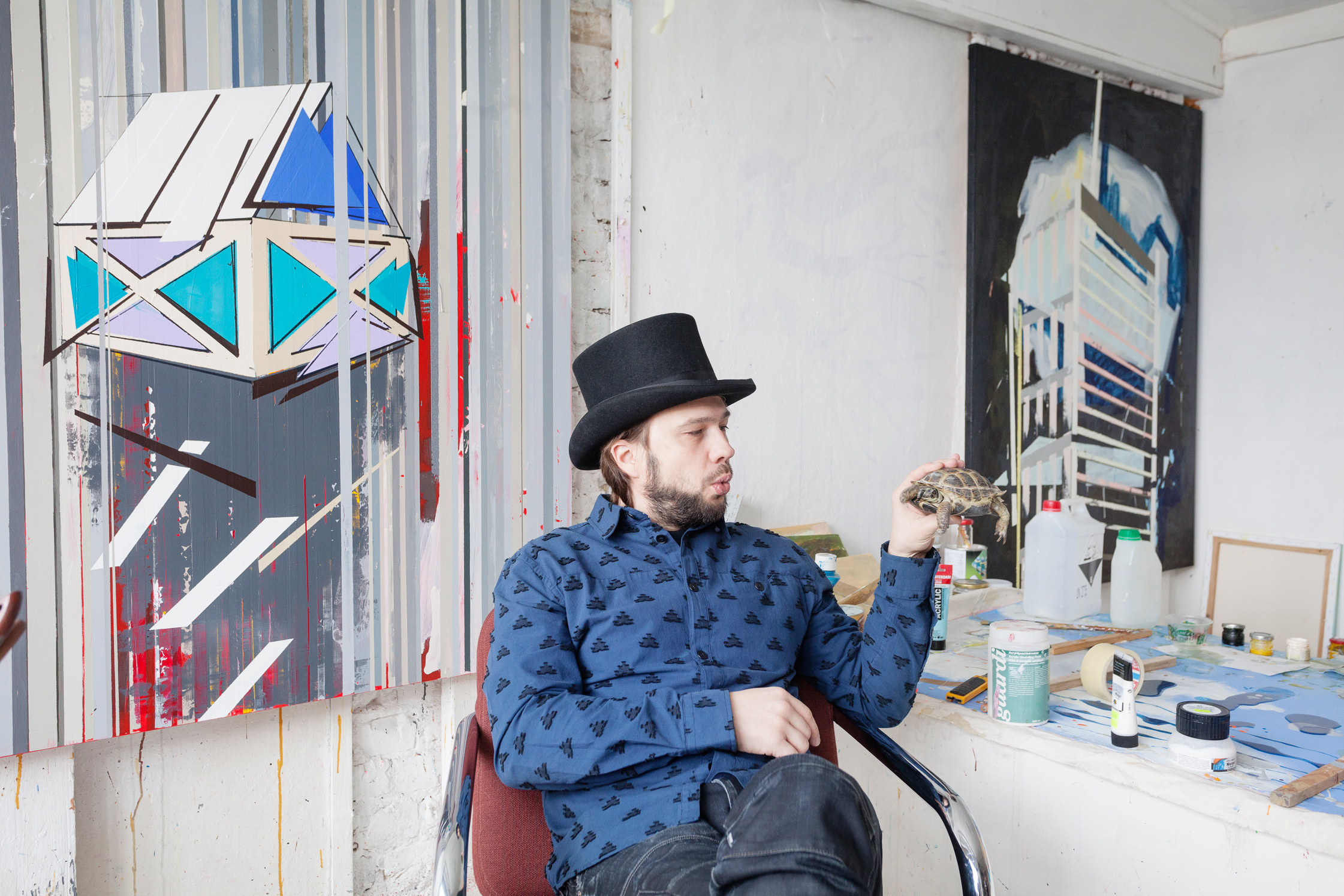
Thanks, Andris, for showing us your extraordinary studio and teaching us about life and art in Soviet Latvia. Learn more about Andris and his work on his website.
Riga is bursting with creative stories waiting to be discovered. Read more from the Latvian capital.
Text & Interview: Jack Mahoney
Photography: Reinis Hofmanis
